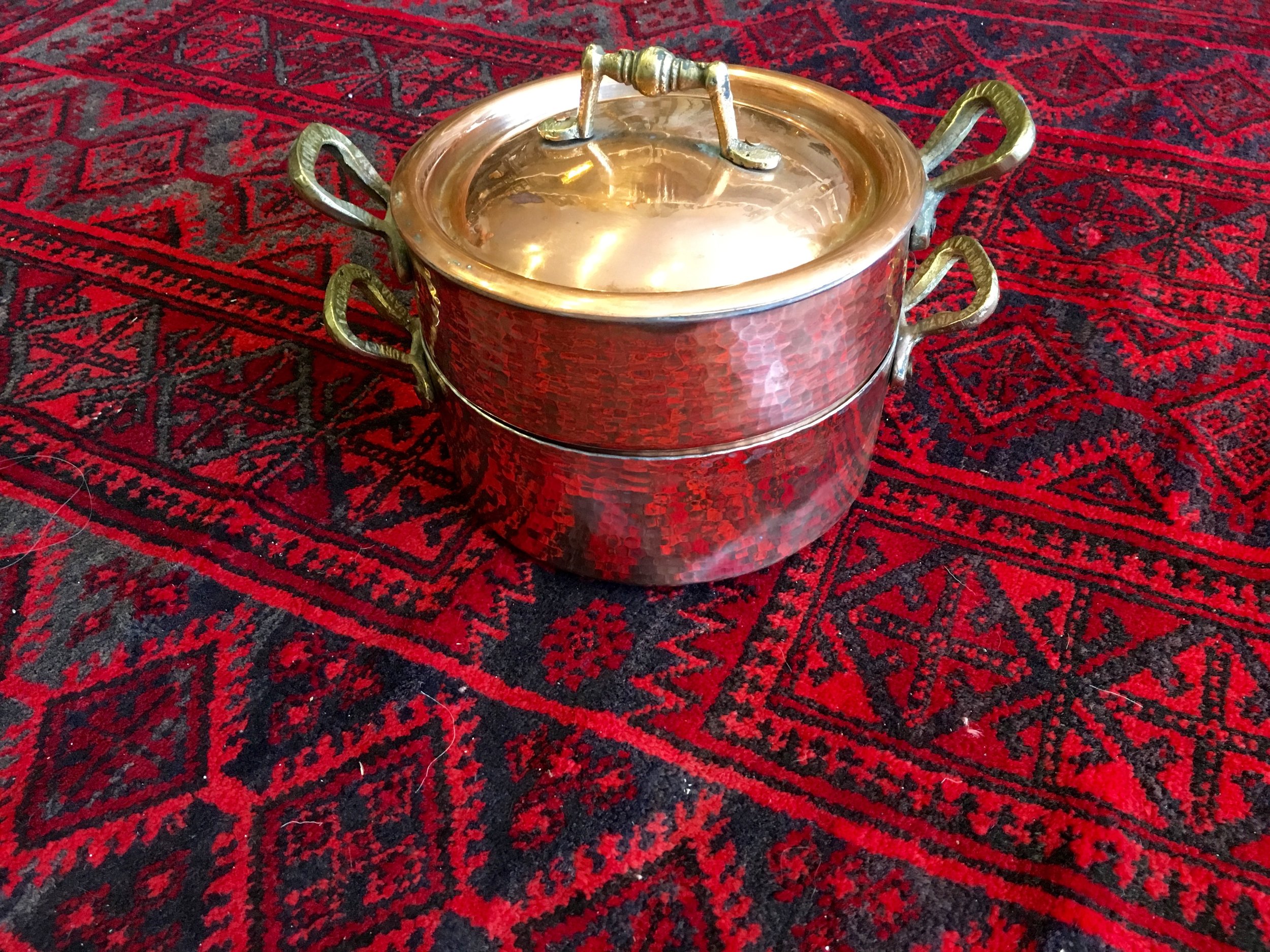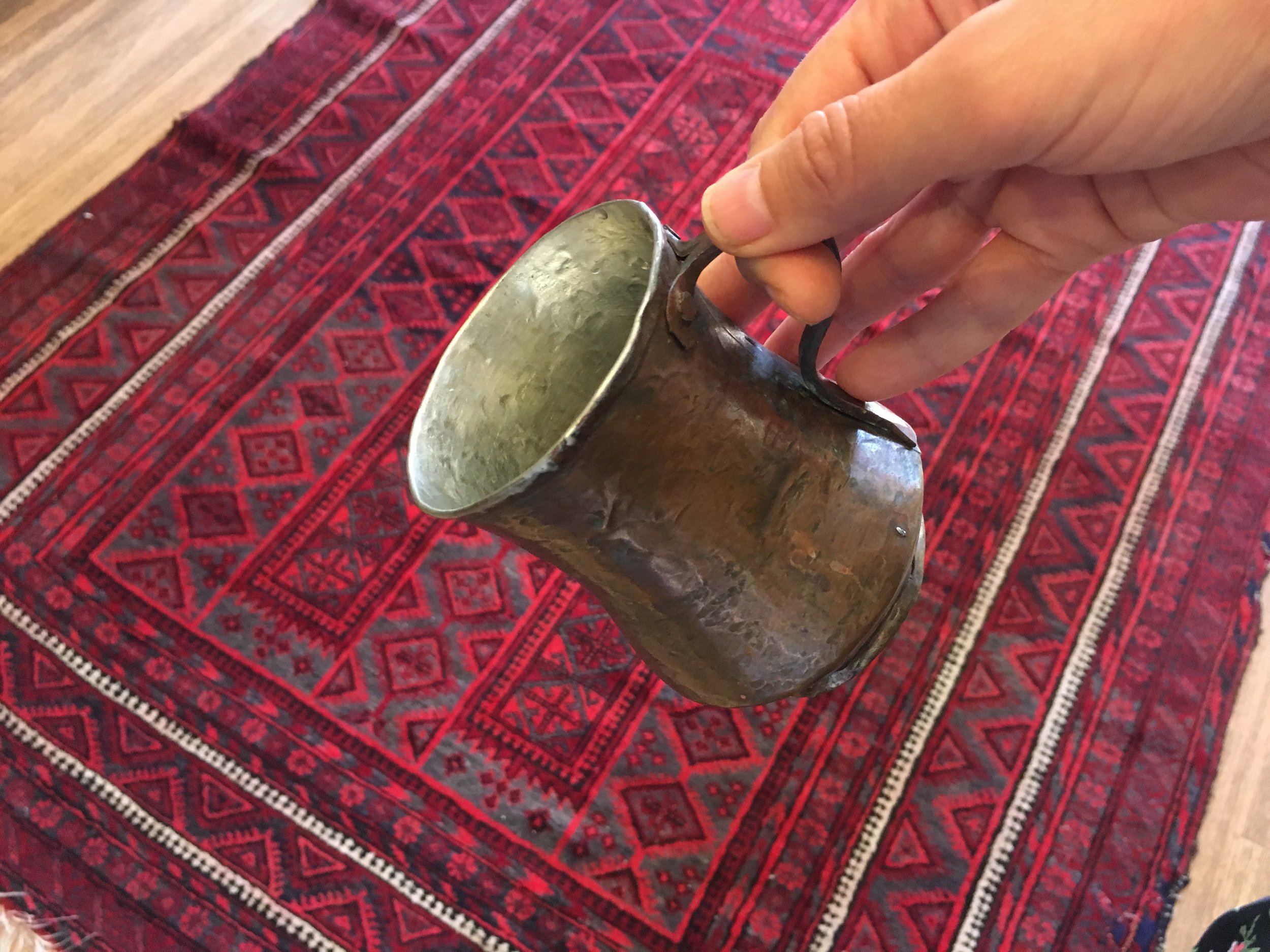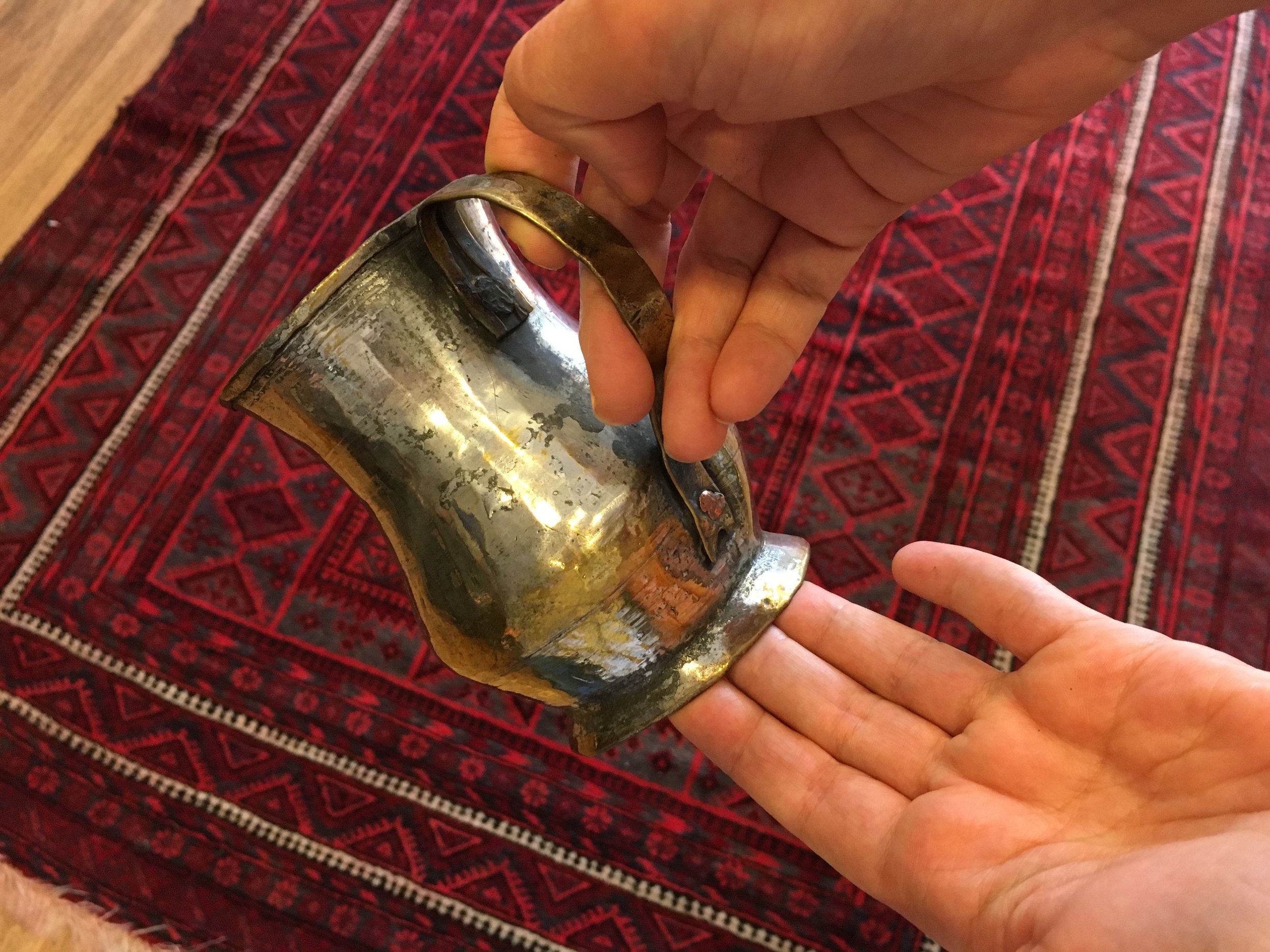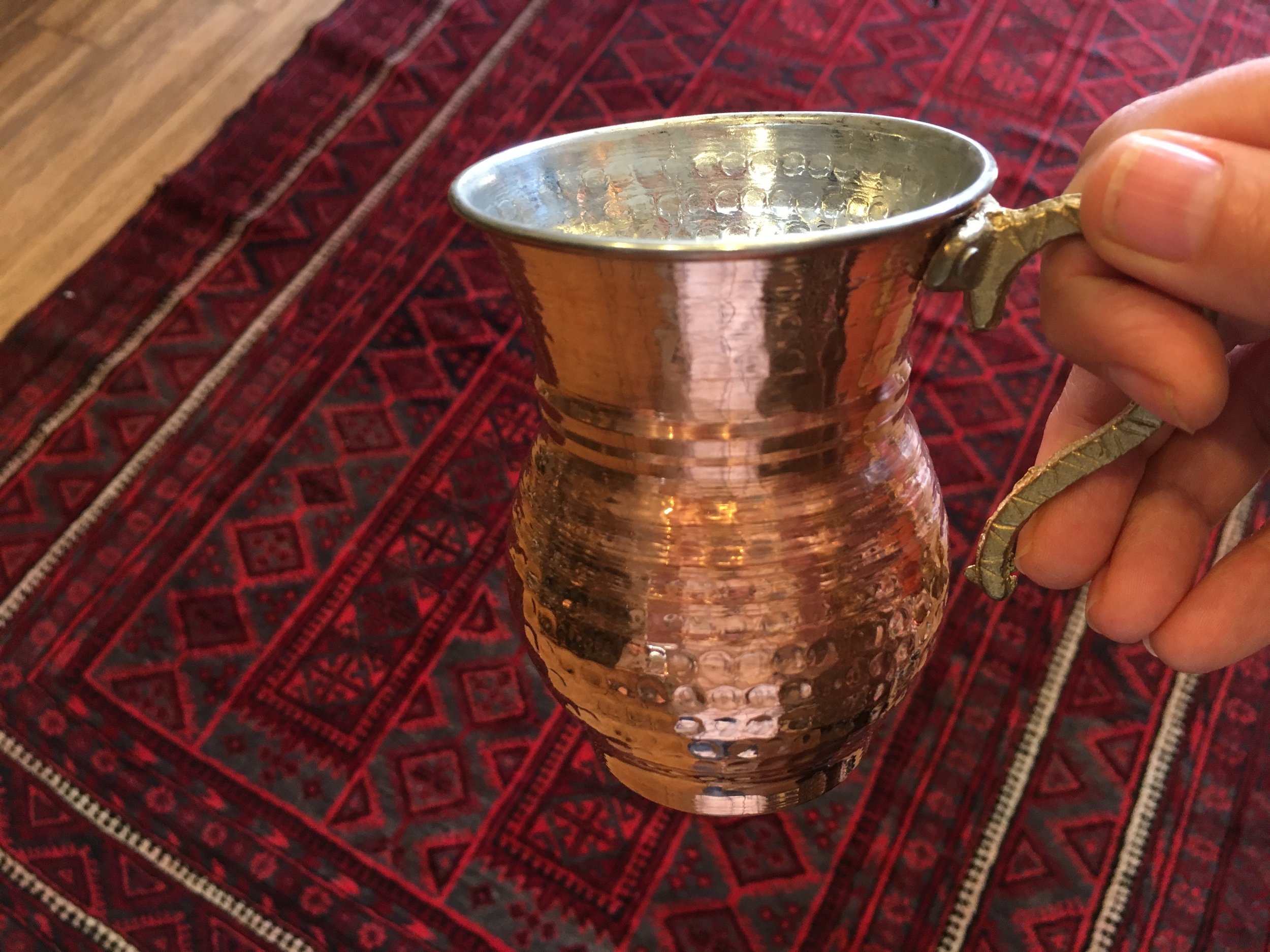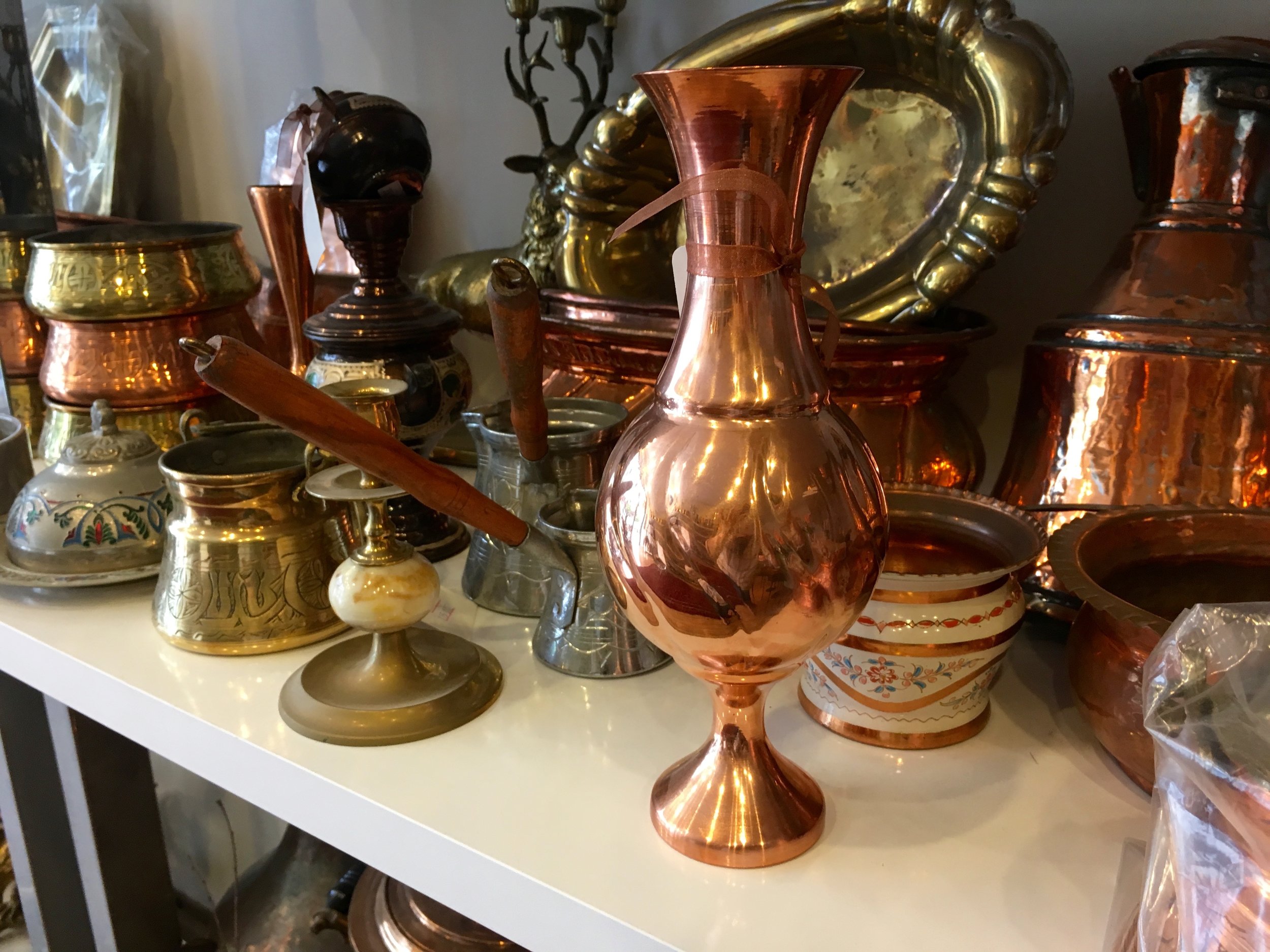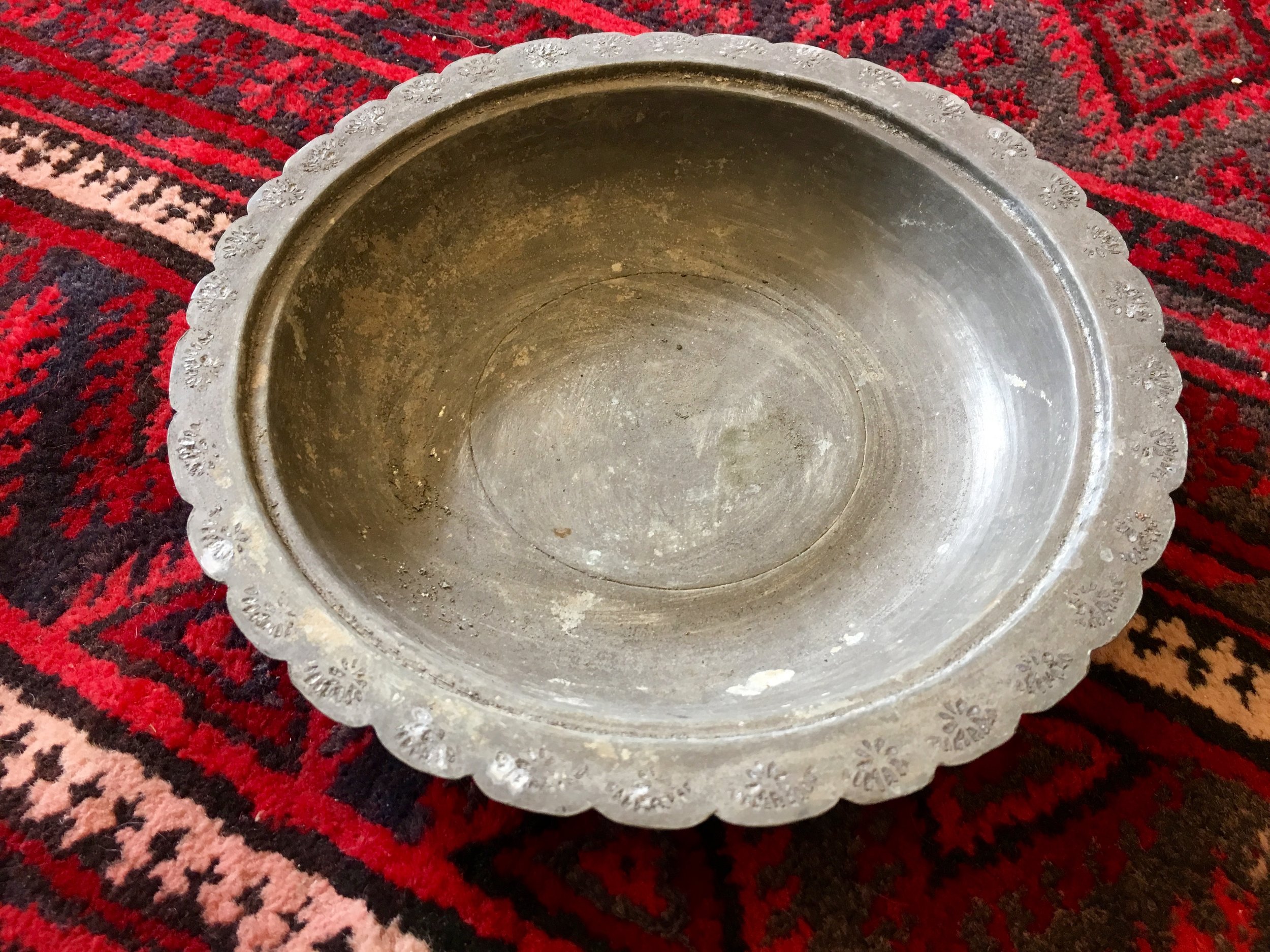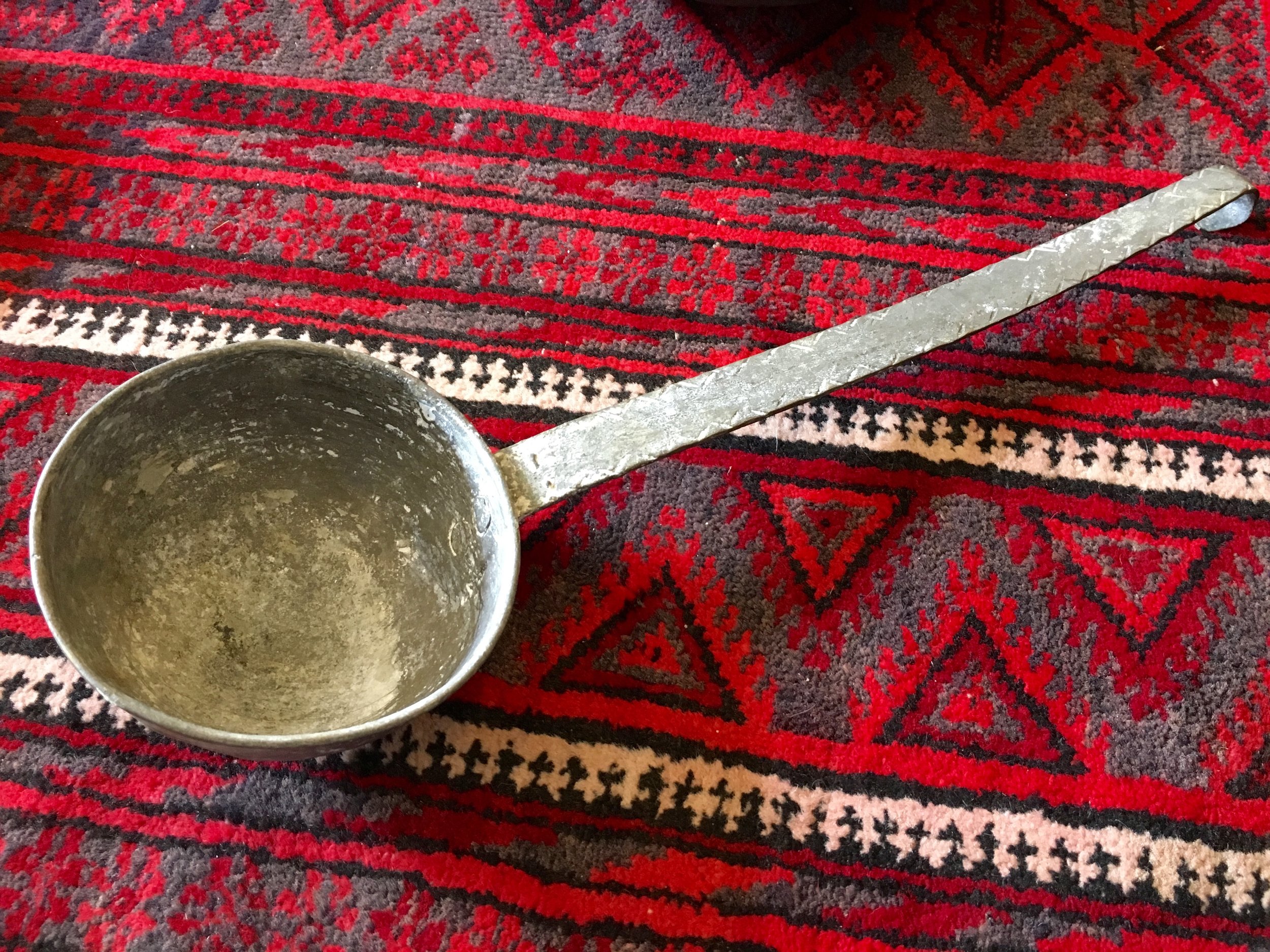3 Shopping Tips for Turkish Copper
There are many things we have discovered since moving to Turkey. We have discovered that cheese ripened in a goatskin is a thing. We have discovered that community cats are a thing. We have discovered that eating liver at 5:30 in the morning is a thing (at least here in Adana).
Among our discoveries is the fact that collecting copper is a thing. Turkey is a treasure trove for quality copper products, both new and old. We have some friends who own a copper shop, so we went down there to learn a bit more about their products. They have some beautiful pieces.
The motif inscribed on this copper tray is an Ottoman design.
They told us that as artisans create a product, they beat the copper with a hammer. The beating makes the metal harder, leading to longer life and more durability. It also leaves little hammer marks all over the product. Copper is a popular metal for cooking utensils because it is a heat conductor. To prevent copper poisoning, the cups and pans in our friend’s store are layered with tin on the inside.
We asked them what people buying copper should pay attention to when shopping. Here is what they shared with us:
1—Handmade vs. Machine-made
One of the things that copper collectors pay attention to is whether or not a product is handmade or machine-made. Our friends pointed out that one of the ways you can tell if a product has been handmade is from the hammer marks and the edges. The hammer marks will be inconsistent and the edges a little less than perfect. While some copper artisans are so skilled their work is barely distinguishable from machine-made, this test holds true most of the time. In the pictures below, the two mugs on the left are handmade, while the one on the right is machine-made.
2—One piece vs. Multiple pieces
At times artisans will craft several pieces, then put them together to form one product. At other times a product is made in one complete piece. A product that is made all in one piece is seen to be a sign of master workmanship. In the lefthand picture below, a beautiful, single-piece crafted vase is on display. In the righthand picture, you can see several "multiple-piece" products.
3—Age
While our friends prefer to talk about individual pieces when it comes to the age of copper, they did say that things like the smoothness of a handle (from years of use) can give hints regarding a piece’s age. Of course, depending on the collector, hundred-year-old copper can be much more desirable than new copper. Immediately below is a closeup of a handle worn from years of use. This particular piece is about 80 years old. Also pictured are an antique copper plate and spoon.
TO OUR FRIENDS IN THE WEST, KEEP LOOKING EAST!
Ginny Lou Henley
Ginny Lou is a co-founder of West2East. Originally from Alabama, Ginny Lou has called Turkey home for the past nine years. To read more about her, click here.



